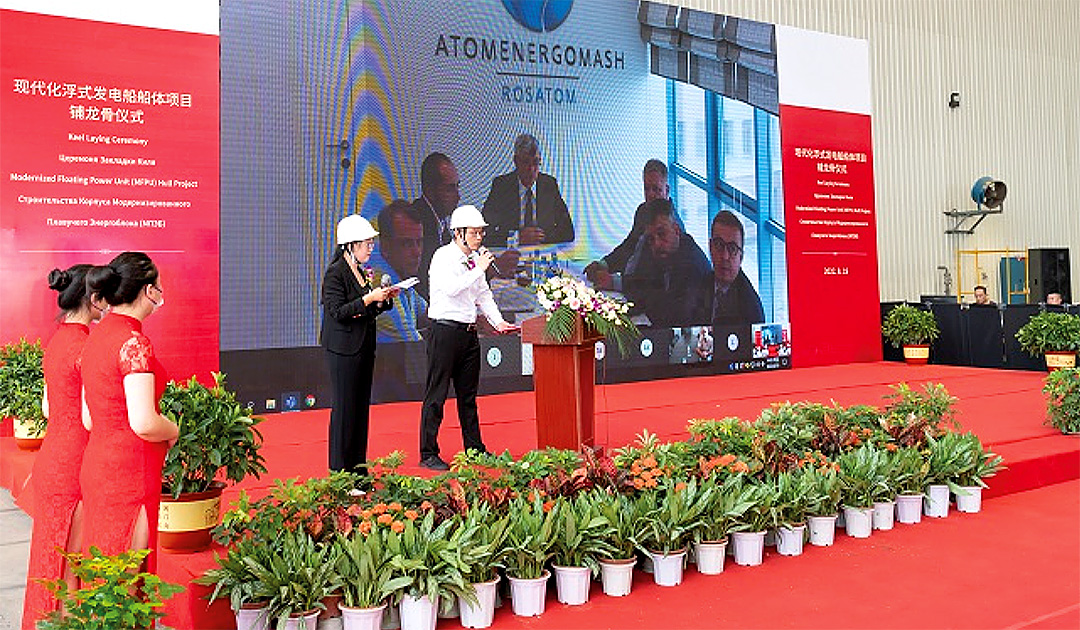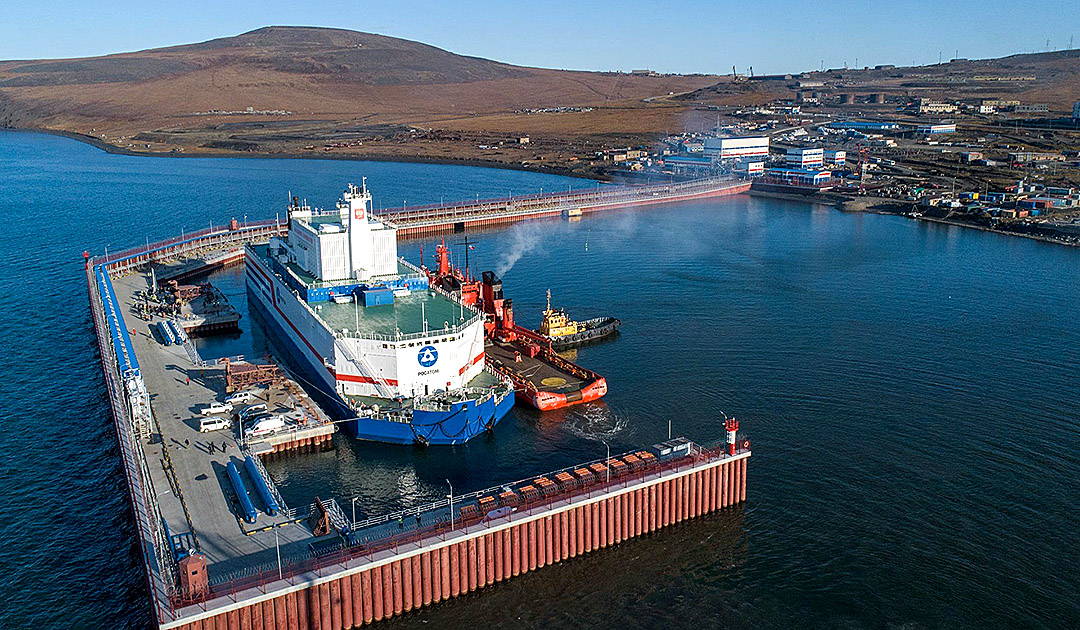
A ceremonial keel laying of the hull of the first Arctic-version nuclear floating propulsion unit (FPU) based on the RITM-200 reactor units took place at a shipyard in Nantong, China. The length of the platform is 140 m, the width 30 m. The weight of the hull without equipment is 9,549 tons, with equipment 19,088 tons. It is planned that the hull will be delivered to Russia by the end of 2023 for completion and installation of the propulsion equipment. The first of four nuclear power plants will be used for mining in eastern Russia.

This is the first of four floating nuclear power plants, each with an installed electrical capacity of 106 MW, designed to operate in the waters of Cape Nagleyngyn in the Chukotka Autonomous Okrug. The contract for the supply of four FPUs was signed by Rosatom’s machine-building division in 2021. Due to the tight deadlines for the implementation of the project and the high workload of domestic shipbuilding companies, it was decided to manufacture the hulls for the first two power plants at a foreign shipyard. The construction scheme and the shipyard builder of the hulls of the third and fourth power plants will be determined in the fourth quarter of this year, as it must first be clarified which shipyard still has free capacity.

Andrey Nikipelov, General Director of JSC Atomenergomash, noted: “This is a special project for us for several reasons:
Firstly, because Atomenergomash plays a new role in it as a supplier of the final product. We are responsible for the construction of the floating power plants from start to the end.
Second, we can say that we are ready to offer floating power plants, which differ in performance and purpose, on the market, depending on their use in the Arctic and tropical versions. Undoubtedly, there is potential for the implementation of large industrial projects and exports with the start of these projects.”
At the same time, Russia is already manufacturing the equipment for all four floating power plants. The RITM-200S reactors installed on it are completely manufactured in the companies of the engineering department.

Energy for mining
The energy will be used to develop and operate several mines in the region, including the Peschanka gold and copper project. The Baimskaya mining zone is located in the Bilibino region in the western part of Chukotka and includes several large mineral and metal deposits.
First, however, the construction of a port infrastructure at Cape Nagleyngyn and road connections must be tackled. The cape is located on the western shore of Chaunskaya Bay. Nearby is the town of Pevek, where Rosatom already operates the floating nuclear power plant “Akademik Lomonossov”.
According to official information, after delivery of the hulls from China, final construction could begin as early as 2023. If all deadlines are met, the first two nuclear power plants are expected to supply energy on site as early as 2026.

Environmentalists express concern
The area around Chaunskaya Bay is hardly populated and thus lacks proper infrastructure. In addition to port facilities and floating nuclear power plants for mining projects, construction of a major new road infrastructure is also to begin.
Environmentalists expressed concern about the plans. In September 2020, a group of young locals protested against the project, saying that the local environment would suffer and that the living conditions of indigenous people would massively deteriorate. In addition, the roads would cross the migration routes of the reindeer and the animals would possibly be driven away by the noise of the trucks.

Bilibino nuclear power plant to be gradually decommissioned
Unit 1 of the Bilibino NPP was decommissioned in the course of commissioning of the floating NPP “Akademik Lomonosov”. Until now, Pevek was supplied with energy via a 500-kilometer overhead line. Unit 1 was taken offline in 2019, and the fuel rods were removed and stored in the decay pool.
According to earlier plans, units 2 to 4 were to be shut down as early as December 2021. However, in September 2020, the shutdown was postponed until December 2023. For this purpose, units 2 and 3 received lifetime extensions until the end of 2025.
Once operational, the four floating power plants would provide enough energy to power the mining projects and the city of Bilibino.
Heiner Kubny, PolarJournal
More on the topic





